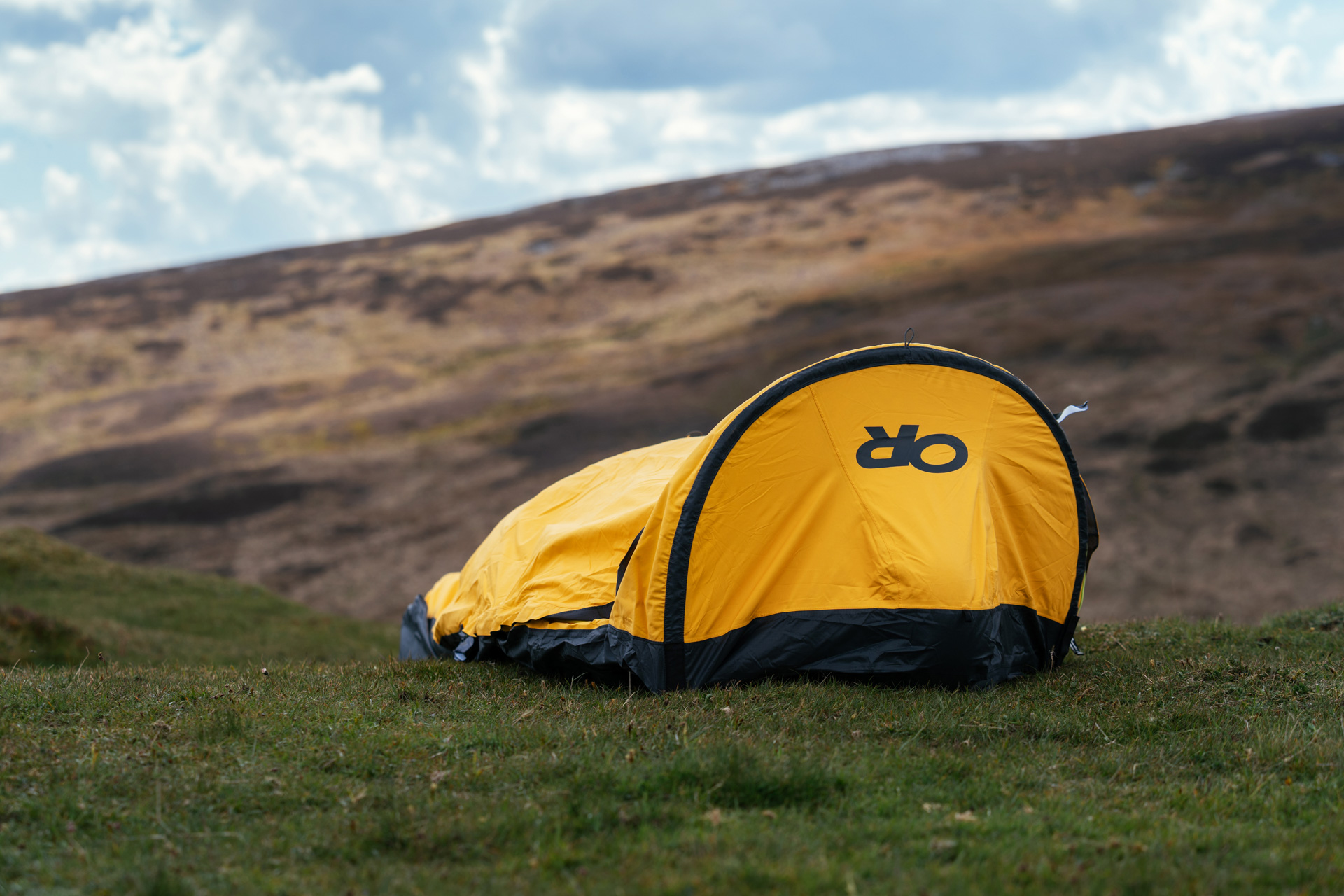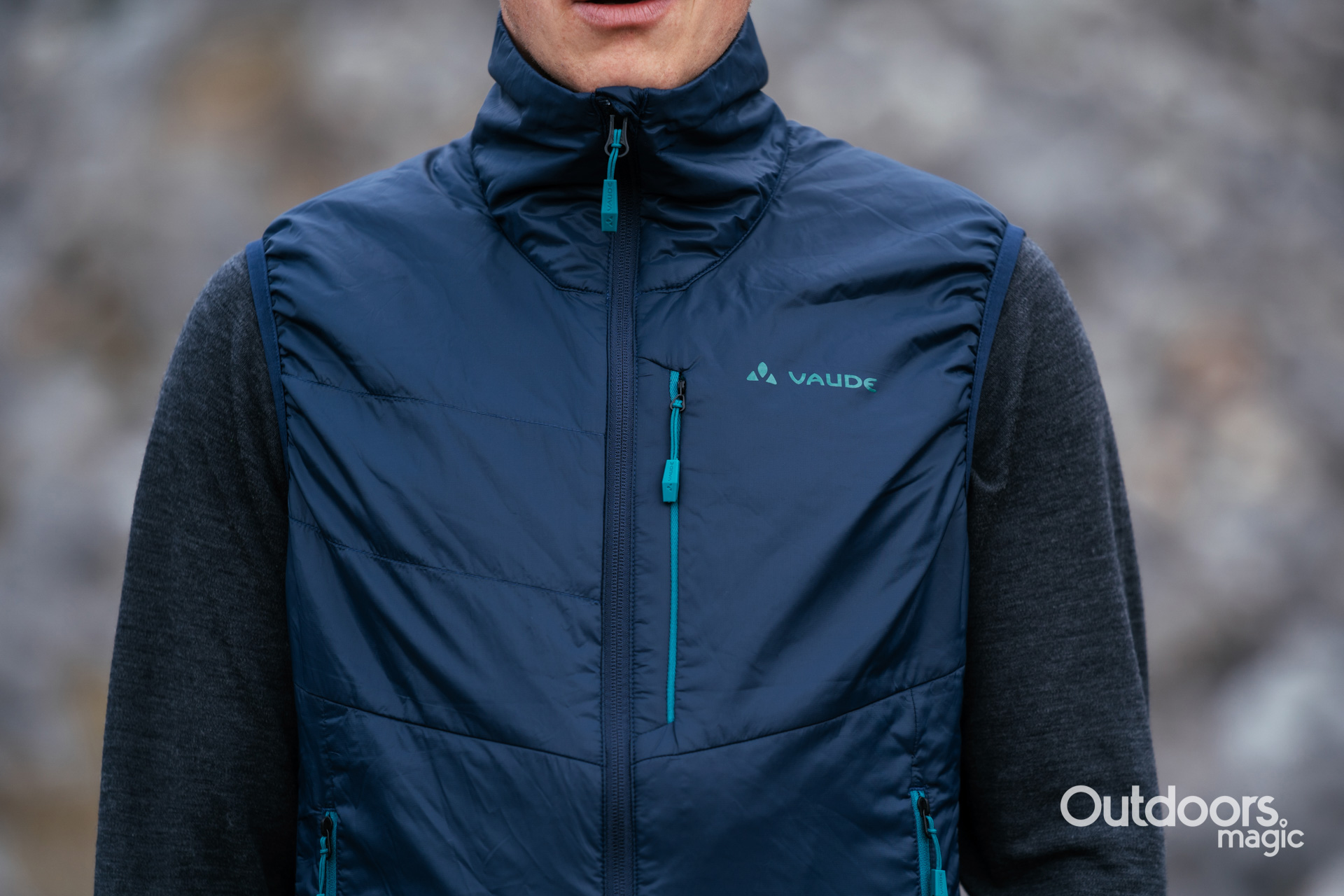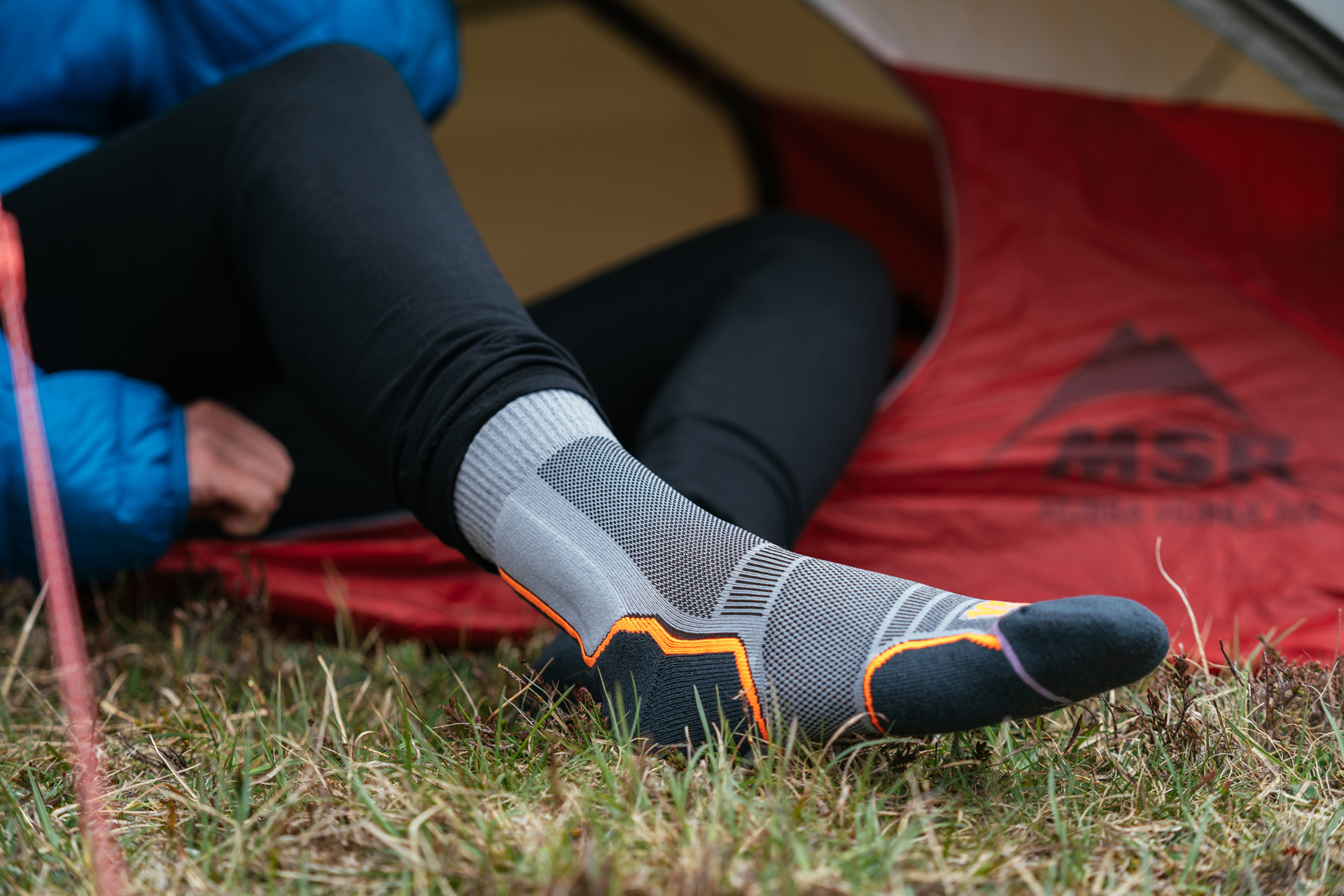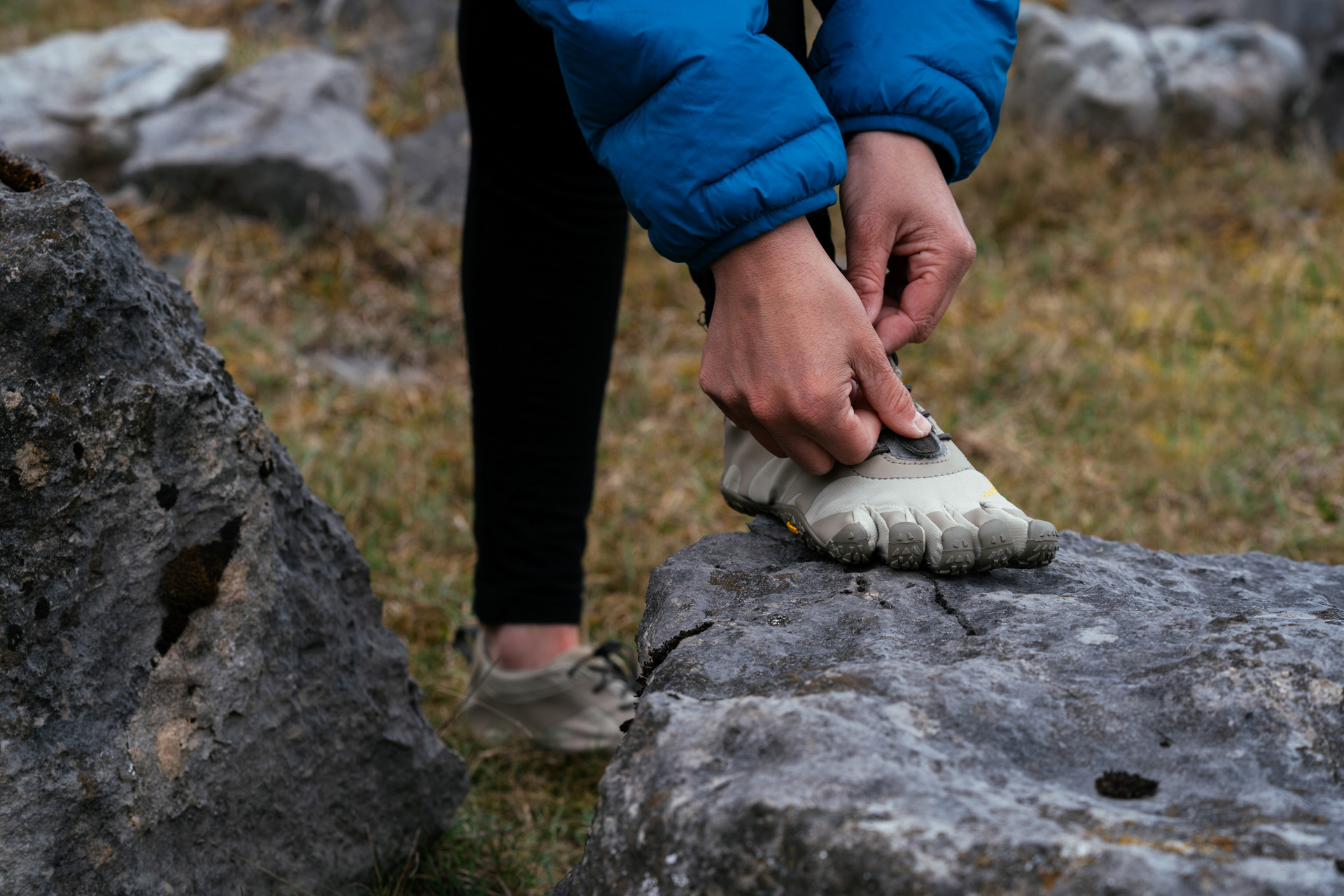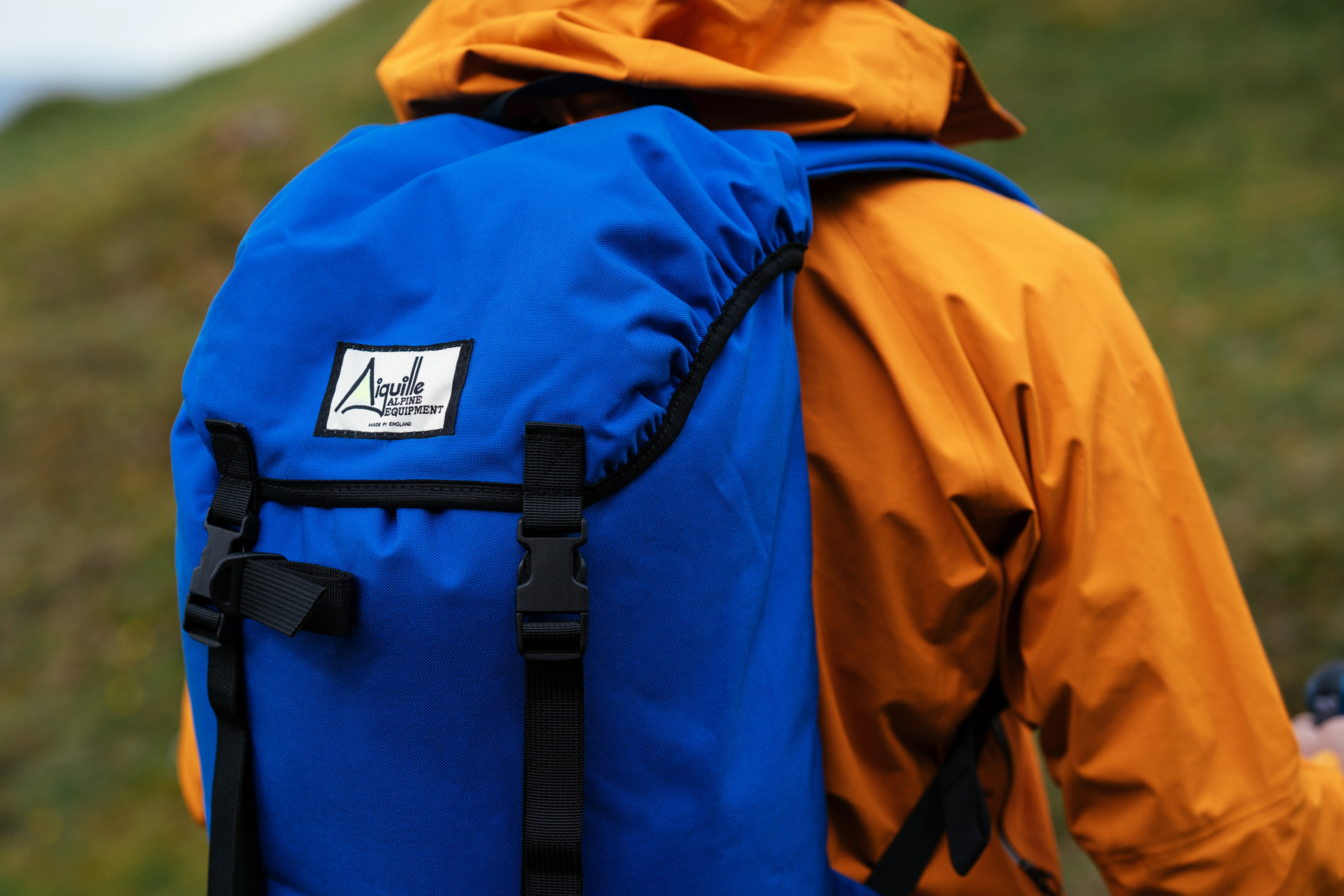Why We Chose The Outdoor Research Interstellar Bivy: Innovative, quality materials, quirky.
We liked the Outdoor Research Interstellar Jacket enough to include it in our Outdoor100 in 2018. We also liked their Helium Bivy enough to include that in our Outdoor 100 2017. Now, here we have what you could say is an amalgamation of the two, the Interstellar Bivy, which makes it into this year’s product guide.
Like the eponymously named jacket, the Interstellar Bivy is made from AscentShell waterproof fabric. It’s a departure from the Pertex fabric they’ve used for their previous bivy bags, but it’s certainly no backwards step. As well as providing three-layer waterproof protection, it’s also impressively breathable, with a moisture vapour transmission rated at 30,000g/m2/24hr. You can actually blow through it, that’s how porous this is (don’t worry, it’ll still keep any wind out). On the top of the bag there’s a 20D layer, while on the base there’s a 40D with TPU coating.
This very light – just 510g. That’s a tad lighter than OR’s Helium Bivy which is 564g. You can also expect a delightfully small packed size, which is about the same as a Therma-a-Rest NeoAir or, in layman’s terms, um, a small loaf of bread. This all makes it perfect for the lightweight hikers out there, particularly trail backpackers.
“There’s also a layer of bug mesh so on dry nights you can get full ventilation and lie back and watch the stars”
Granted, you’re not going to have a luxuriously comfortable night in this, but that’s bivying. They say that with backpacking you’re looking to strike a balance between comfort in the day (a lighter load to carry) and comfort in the night, and with bivy bagging, the scales will always be tipped slightly in favour of the daytime comfort.
Still, as bivies go, this is a comfortable one. That’s mainly thanks to the single hooped pole that keeps the fabric off your face high enough at nearly 20 inches to allow you to prop yourself up on your elbow. If you want, there’s the option of going ultra minimalist and using the Outdoor Research Interstellar Bivy without that pole, but you’re only saving about 50g, so whether that’s worth it depends on how seriously you take your ultralighting.

